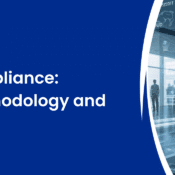IT Audits vs. Security Compliance: Clearing the Confusion
IT Audits vs. Security Compliance: Clearing the Confusion
IT Audits vs. Security Compliance: Clearing the Confusion
In today’s technology-driven world, many organizations struggle to distinguish between IT audits and security compliance. While both play critical roles in protecting digital assets, they serve different purposes in maintaining IT governance and minimizing risks.
An IT audit focuses on assessing internal systems, controls, and data protection measures to ensure that technology operations align with business goals. In contrast, security compliance ensures adherence to external standards, laws, and compliance frameworks like ISO 27001, SOC 2, and GDPR.
Understanding the difference between IT audit vs compliance helps businesses strengthen risk management, ensure accountability, and maintain trust among stakeholders.
Why Understanding the Difference Matters
Confusing IT audits with security compliance can result in compliance failures or inefficient resource use.
While compliance ensures that your organization meets regulatory expectations, an audit examines how effectively your internal systems and processes uphold those standards.
Key reasons this distinction matters
- Improves overall IT governance and internal control.
- Helps prioritize investments in security and compliance.
- Strengthens risk management by identifying weak areas early.
- Prepares organizations for both internal and external inspections.
In short, compliance keeps you legally aligned, while audits validate the effectiveness of your controls.
Core Differences Between IT Audits and Security Compliance
While both functions support cybersecurity, they differ in purpose and approach.
- Purpose: IT audits evaluate how secure and efficient internal systems are, while security compliance focuses on following external rules and standards.
- Focus Area: Audits emphasize internal risk management, control evaluation, and operational performance.
Compliance deals with meeting legal and regulatory obligations under compliance frameworks such as ISO, PCI DSS, or HIPAA. - Frequency:IT audits are conducted periodically or when significant system changes occur.
Compliance, however, is an ongoing process requiring continuous monitoring and annual reviews. - Outcome: IT audits result in findings, recommendations, and performance reports.
Compliance outcomes often lead to certifications or regulatory approvals.
Both are essential audits that test the system’s effectiveness, while compliance proves adherence to standards.
Key Elements of Effective IT Governance
Strong IT governance connects audits, compliance, and risk management into a single framework. For success, organizations should implement
- Clear Audit Requirements-Define audit scope, frequency, and control objectives based on business needs and security priorities.
- Established Compliance Frameworks-Follow globally accepted standards like ISO 27001 or SOC 2 for consistent and reliable security practices.
- Integrated Risk Management-Conduct regular risk assessments to detect threats and create proactive defense measures.
- Continuous Monitoring-Track compliance status and automate alerts for deviations to ensure 24/7 protection.
- Employee Awareness and Training-Build a culture of security by educating teams about compliance responsibilities and best practices.
How IT Audits Strengthen Risk Management
An IT audit plays a vital role in identifying weaknesses, verifying controls, and supporting proactive risk management.
It ensures that your IT infrastructure operates securely, efficiently, and in line with your organizational objectives.
Through an IT audit, organizations can
- Detect vulnerabilities and misconfigurations early.
- Verify disaster recovery and backup mechanisms.
- Ensure compliance with internal and external policies.
- Receive actionable insights for improving cybersecurity.
By combining audits with compliance frameworks, companies can confidently maintain operational resilience and regulatory alignment.
Aligning IT Audits with Compliance Frameworks
Many organizations treat audits and compliance as separate processes, but aligning them can save time, effort, and costs.
For example
- ISO 27001 mandates periodic internal audits to validate compliance.
- SOC 2 requires third-party auditor assessments for certification.
- GDPR demands ongoing documentation and accountability for data handling.
When IT audits support security compliance, organizations gain a clear roadmap for governance and long-term cyber resilience.
Conclusion
In the debate of IT audit vs compliance, the truth is they complement each other.
Security compliance ensures that an organization meets regulatory obligations, while IT audits confirm that systems truly perform as expected.
Together, they form the foundation of strong IT governance and effective risk management, helping businesses protect data, maintain credibility, and ensure consistent improvement in security posture.
By embracing both approaches, organizations move beyond compliance, achieving true operational excellence and resilience. Click here to learn more about how to implement these strategies in your organization.
FAQs
How can IT audits help our company identify security gaps?
IT audits assess your systems, access controls, and data protection mechanisms to uncover vulnerabilities that could lead to breaches or compliance failures. They help management take preventive action before risks become incidents.
What benefits will our organization gain from regular IT audits?
Regular IT audits strengthen compliance, improve data security, ensure adherence to frameworks like ISO 27001 or SOC 2, and build stakeholder confidence through transparency and accountability.
How do we prepare our internal team for an upcoming IT audit?
Ensure all policies, access logs, and system configurations are updated and documented. Communicate audit timelines to relevant departments and conduct internal reviews to identify potential non-compliance areas.
Can an IT audit help us meet international compliance standards?
Yes. Comprehensive IT audits align your company’s security controls with global standards like GDPR, HIPAA, and ISO 27001, helping you achieve and maintain certification readiness.
How do IT audits improve business continuity and disaster recovery?
By testing backup procedures, recovery plans, and network resilience, IT audits ensure your business can maintain operations even during cyber incidents or data loss scenarios.
What kind of documentation should our company maintain for compliance audits?
Maintain security policies, access control records, incident reports, software licenses, vendor security agreements, and risk assessment reports. Proper documentation speeds up the audit process and minimizes penalties.


